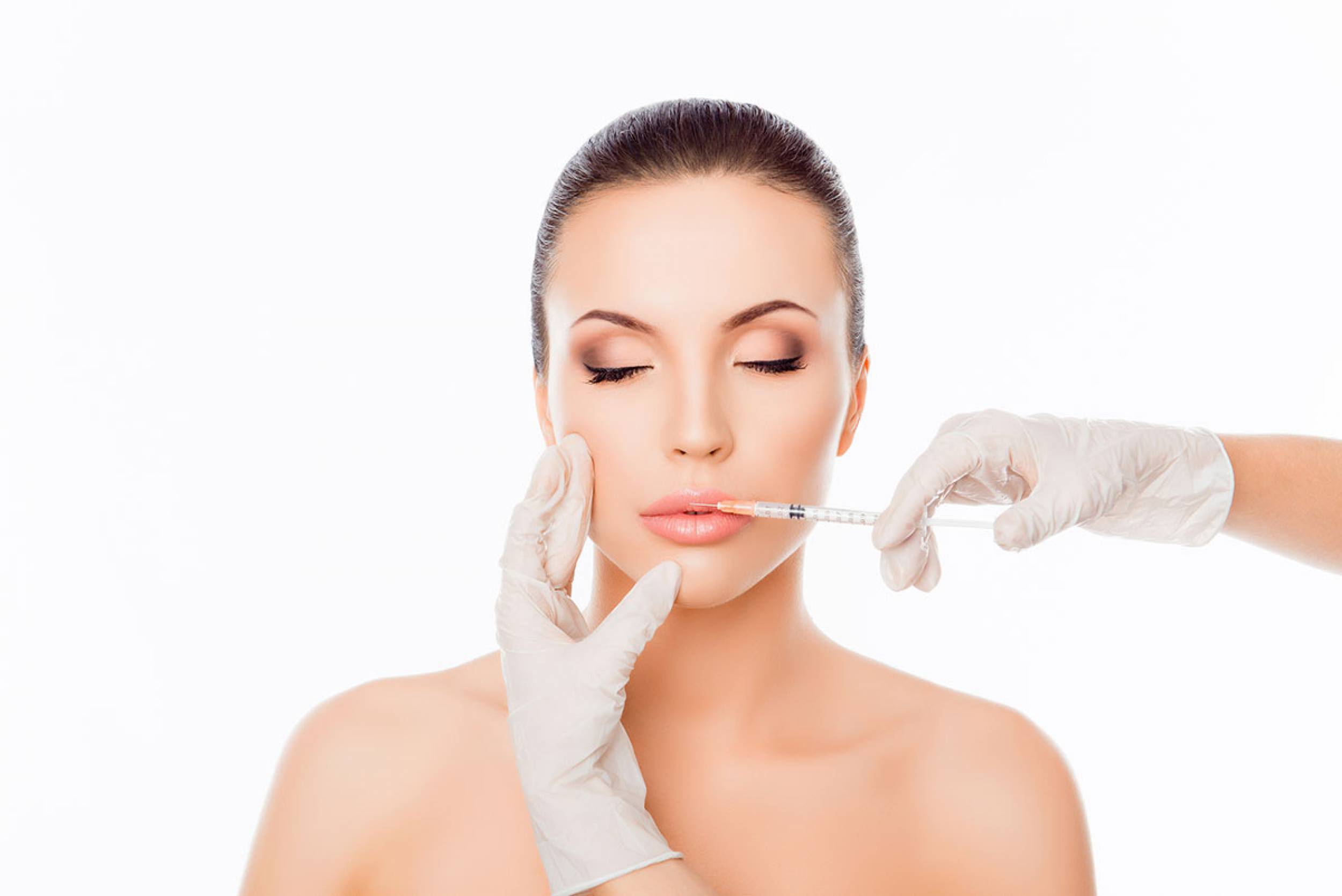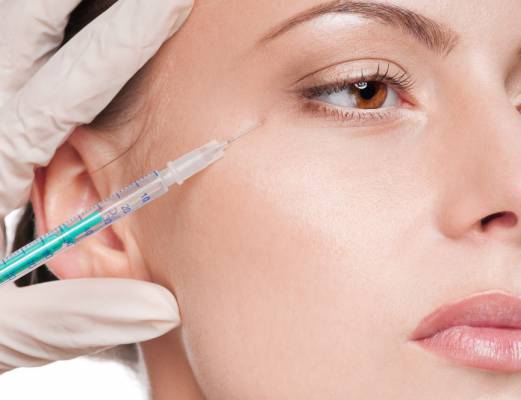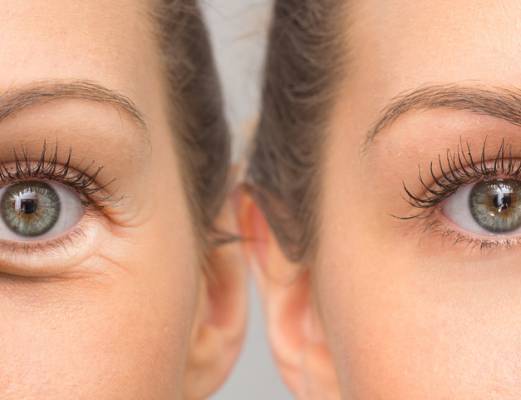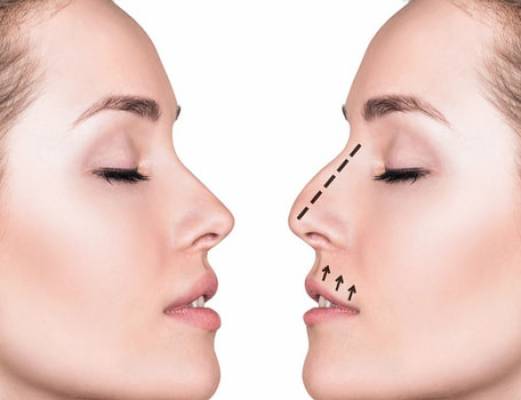Injectable Fillers

Injectable Fillers
As we age, our faces begin to show the effects of gravity, sun exposure and years of facial muscle movement, such as smiling, chewing and squinting. The underlying tissues that keep our skin looking youthful and plumped up begin to break down, often leaving laugh lines, smile lines, crow’s feet or facial creases over the areas where this muscle movement occurs.
Soft-tissue fillers, most commonly injectable Hyaluronic Acid (H.A.) or fat, can help fill in these lines and creases, temporarily restoring a smoother, more youthful-looking appearance. When injected beneath the skin, these fillers plump up creased and sunken areas of the face. They can also add fullness to the lips and cheeks. Injectable fillers may be used alone or in conjunction with a resurfacing procedure, such as a laser treatment or peeling, or a recontouring procedure, such as a facelift.
If you are considering a facial-rejuvenation treatment, this page will give you a basic understanding of the procedure – when injectables can help, how the procedure is performed, and what results you can expect. You should know though that a lot depends on your individual circumstances. Therefore, please make sure you ask your doctor if there is anything about the procedure that you don’t understand.
KNOWING YOUR OPTIONS
Injected H.A. and fat are primarily used to improve the appearance of the skin’s texture. They can help fill out deep facial wrinkles, creases and furrows, “sunken” cheeks, skin depressions and some types of scars. They can also be used to add a fuller, more sensuous look to the lips. Injectables are usually not sufficient for severe surface wrinkles on the face, such as multiple vertical “lipstick lines” that sometimes form around the mouth. Instead, your plastic surgeon may suggest a resurfacing technique, such as chemical peel, dermabrasion or laser treatments. Rather than filling in facial lines, resurfacing methods strip away the outer layers of the skin to produce a smoother appearance.
Deep folds in the face or brow caused by overactive muscles or by loose skin may be more effectively treated with cosmetic surgery, such as a facelift or brow lift. Injectables are sometimes used in conjunction with facial surgery procedures; however, injectables alone cannot change facial contour the way surgery can. Keep in mind that a plastic surgeon is a specialist who can offer you the full gamut of the most advanced treatments ranging from cosmetic surgery, refinishing techniques, laser therapy, injectables and the use of other fillers. You and Dr. Makram may determine that a single procedure or a combination of procedures is the best choice for you.
WHAT TO EXPECT FROM TREATMENT
The most important fact to remember about injectable fillers is that the results are not permanent. Injected material is eventually metabolized by the body. You should not expect the same long-lasting results that may be gained from cosmetic surgery. In some individuals, the results may last only a few weeks; in others, the results may be maintained indefinitely. Researchers believe that age, genetic background, skin quality and lifestyle as well as the injected body site may all play a role in the injected material’s “staying power”. However, the precise reason for the variation of results among patients has yet to be identified.
RISKS RELATED TO INJECTABLES
When injectables are administered by a qualified plastic surgeon, complications are infrequent and usually minor in nature. Still, individuals vary greatly in their anatomy, their physical reactions and their healing abilities. The outcome of treatment with injectables is never completely predictable.
PLANNING FOR TREATMENT
FACIAL REJUVENATION IS VERY INDIVIDUALIZED
In your initial consultation, Dr. Makram evaluates your face – the skin, the muscles and the underlying bone – and discusses your goals for the surgery. He will help you select a treatment option based on your goals and concerns, your anatomy and your lifestyle. Dr. Makram will ask you about your medical history and drug allergies. He will also check for conditions that could cause problems, such as active skin infections or non-healed sores from injuries.
WHERE YOUR TREATMENT WILL BE PERFORMED
Injectables are usually administered in a surgeon’s office-based facility. If, however, you are being hospitalized for a facelift, neck lift, brow lift, or any other procedure, your injections may be administered in the hospital as well.
TYPES OF ANESTHESIA
Both the donor and recipient sites are numbed with local anesthesia. Sedation can be used as well. In this case though, you should make sure you arrange for a ride home after your treatment.
THE TREATMENTS
TREATMENT WITH FAT INJECTIONS
In the medical world, the fat-injection procedure is known as autologous fat transplantation or microlipoinjection. It involves extracting fat cells from the patient’s abdomen, thighs, buttocks or elsewhere and reinjecting them beneath the facial skin. Fat is most often used to fill in “sunken” cheeks or laugh lines between the nose and mouth, to correct skin depressions or indentations, to minimize forehead wrinkles and to enhance the lips.
THE PROCEDURE
After both the donor and recipient sites are cleansed and treated with a local anesthesia, the fat is withdrawn using a syringe with a large-bore needle or a cannula (the same instrument used in liposuction) attached to a suction device. The fat is then prepared and injected into the recipient site with a needle. Sometimes an adhesive bandage is applied over the injection site. As with collagen, “overfilling” is necessary to allow for fat absorption in the weeks following treatment. When fat is used to fill sunken cheeks or to correct areas on the face other than lines, this overcorrection of newly injected fat may temporarily make the face appear abnormally puffed out or swollen.
AFTER TREATMENT
Af a larger area was treated, you may be advised to curtail your activity for a brief time. However, many patients are able to resume normal activity immediately. You can expect some swelling, bruising or redness in both the donor and recipient sites. The severity of these symptoms depends on the size and location of the treated area. You should stay out of the sun until the redness and bruising subsides – usually about 48 hours. In the meantime, you may use makeup with sunblock protection to help conceal your condition. The swelling and puffiness in the recipient site may last several weeks, especially if a large area was filled.
RESULTS
The duration of the fat injections varies significantly from one patient to another. Though some patients have reported results lasting a year or more, the majority of patients find that at least half of the injected fullness disappears within 3-6 months. Therefore, repeated injections may be necessary. Your doctor will advise you on how to maintain your results with repeat treatments.
YOUR NEW LOOK
If you’re like most patients, you’ll be very satisfied with the results of your injectable treatments. You may be surprised at the pleasing results that can be gained from this procedure.



